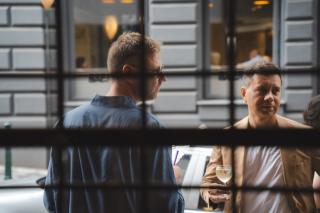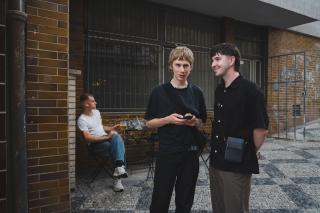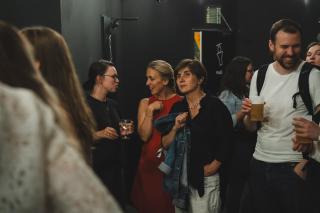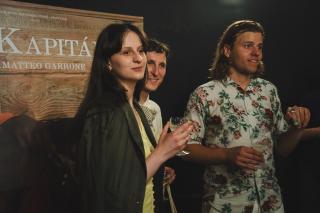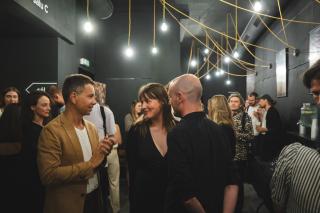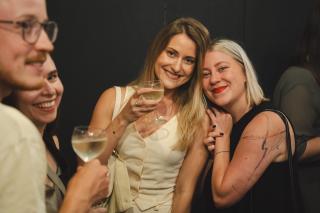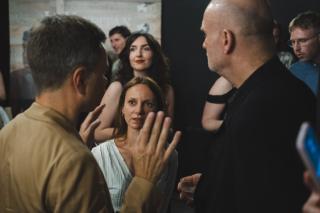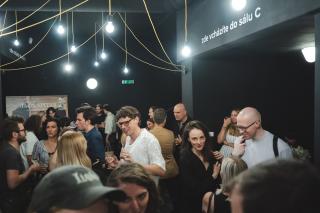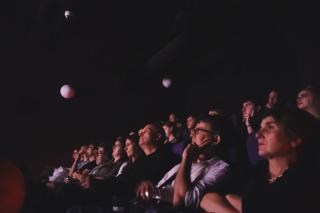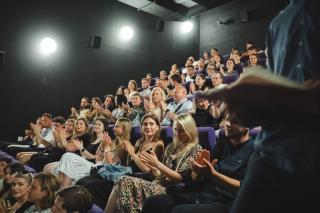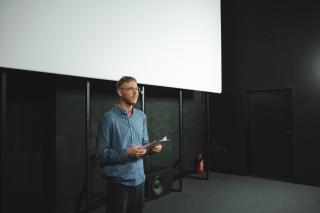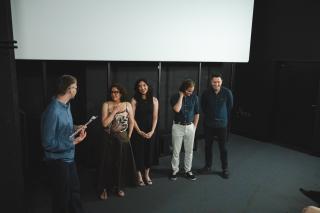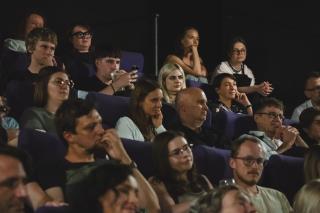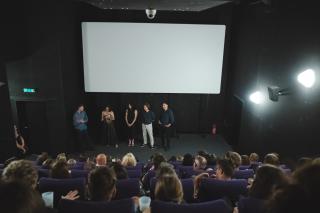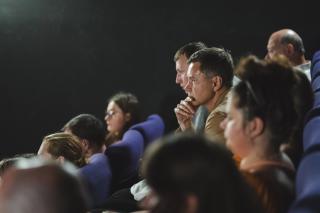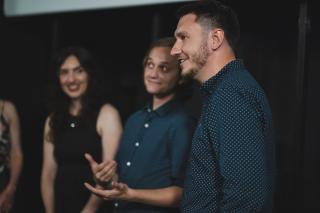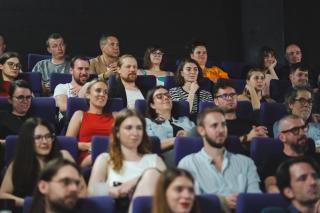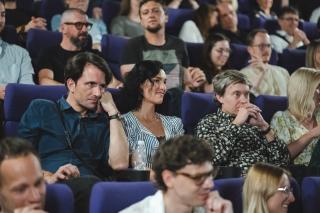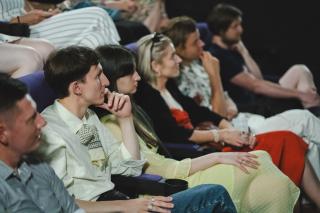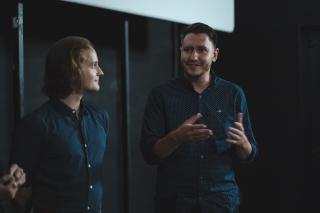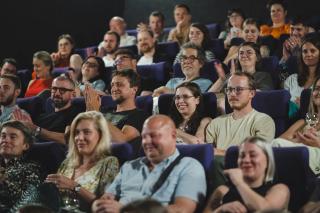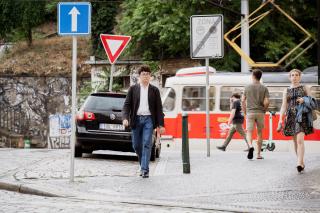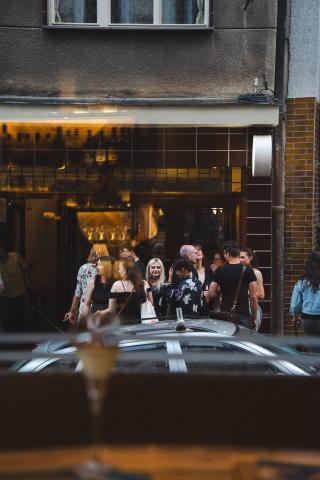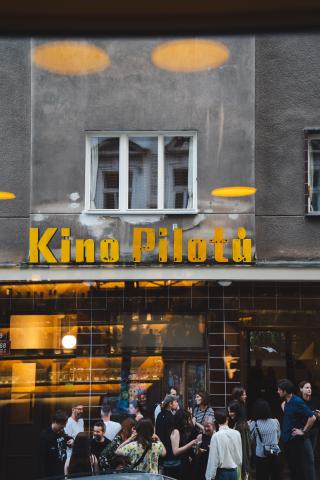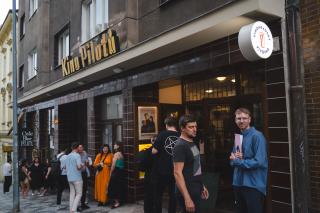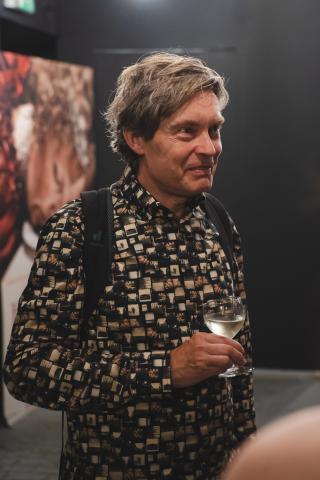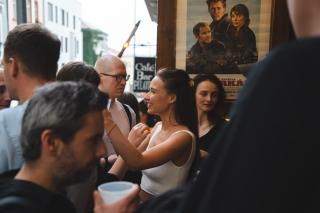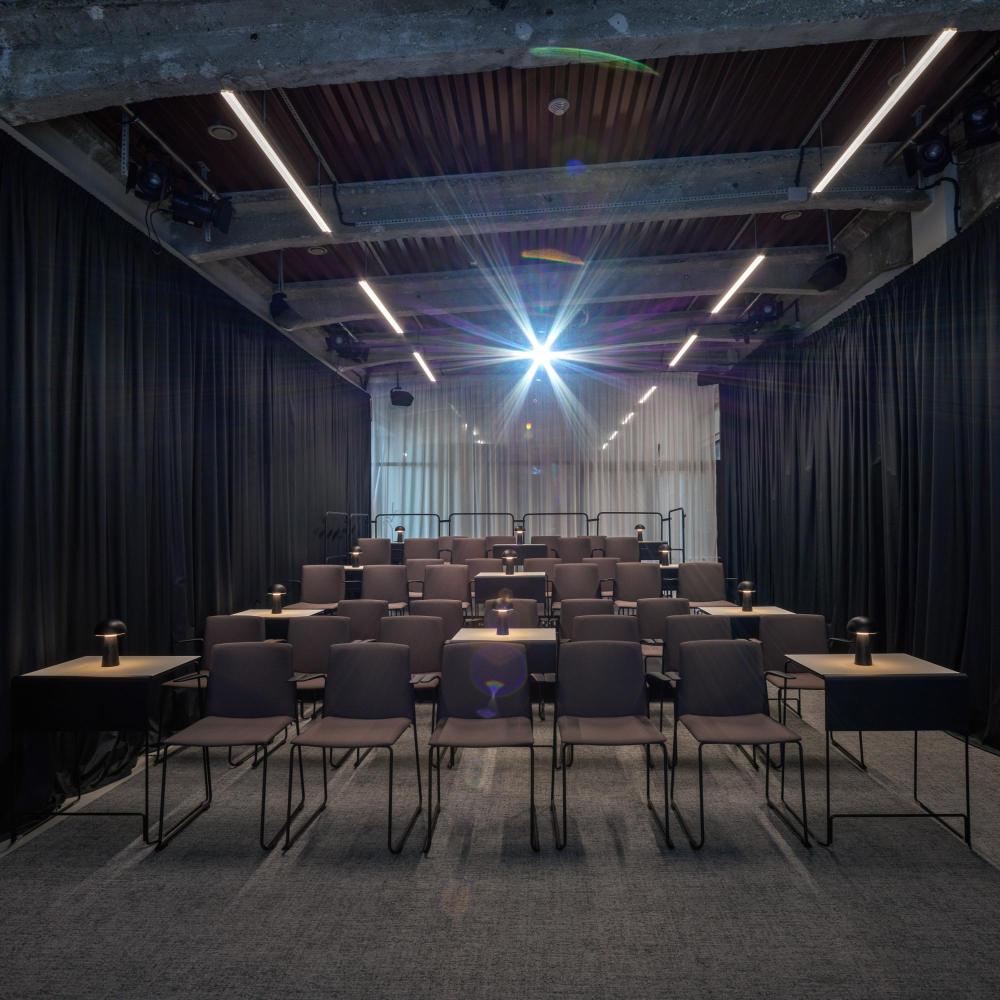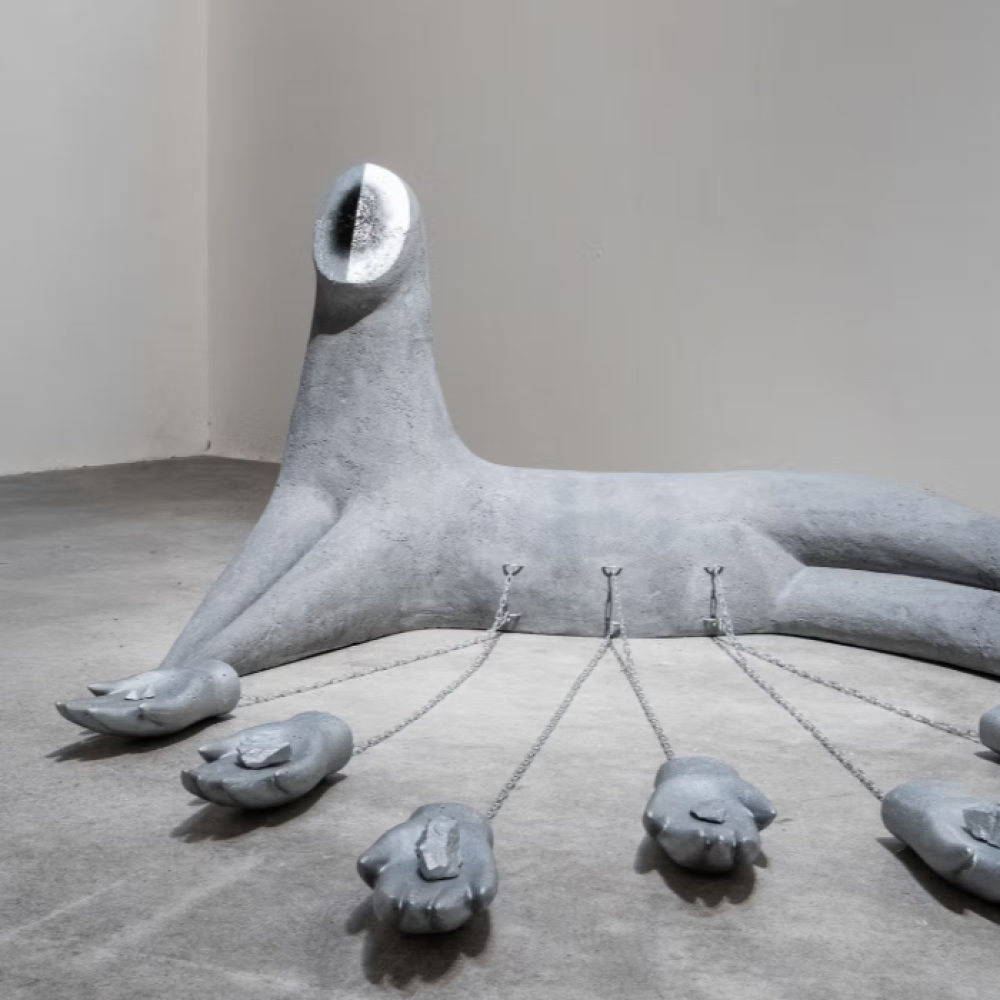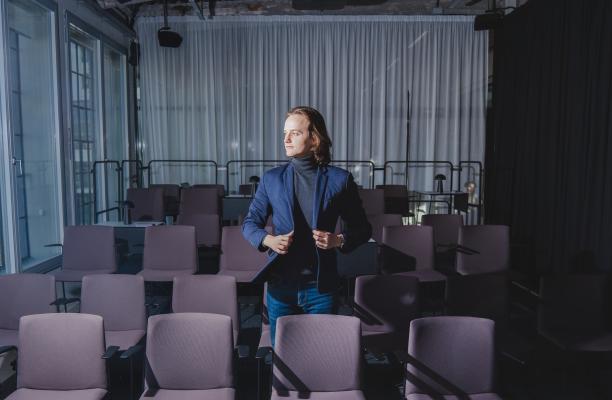
Michael Bukovanský, whose name you may normally know in connection with Telegraph Cinema productions, has this time taken on the role of director for the first ever film produced under the auspices of the Telegraph in association with Story factory. The short documentary Napojení: Ztvárnit nepopsatelné (Connection: Depicting the Indescribable) offers a new perspective on the exhibition CONNECTIONS, which took place at the Telegraph Gallery in late 2023/early 2024. In the following interview, Michael discusses his approach to documentary filmmaking, his collaborations with artists and the process of making this short film.
The documentary Napojení: Ztvárnit nepopsatelné (Connection: Depicting the Indescribable) was created as a follow-up to the eponymous exhibition held at the Telegraph Gallery at the turn of last year. What was your initial impression of the exhibition, and how did you want to reflect it in film?
The installations and paintings presented in the exhibition curated by Terezie Zemánková were mostly abstract and almost always captured some extraordinary life experience, or very personally reflected the inner philosophy of the represented artists. I was therefore intrigued to explore the background of their creation and how the approaches of several generations of artists fundamentally differ or, on the contrary, resonate with each other. These exhibited works certainly had their own narrative value. Still, I believe that if they are complemented by the explanations and interpretations of the authors themselves, the viewer will gain a clearer understanding of how to read a specific piece. In this respect, I see our film as an extension of the entire exhibition, not just a mere retrospective.
This was the first time that a similar documentary complemented an exhibition at the Telegraph. Where did the initial impulse to create it come from?
The idea came from the gallery curator, Mira Macík. Given that the exhibition mapped the perspectives of several acclaimed Czech artists on a world hidden from the human eye, the whole theme seemed incredibly mysterious and attractive to me. The exhibition was quite specific in its concept and thematic focus, just like its authors. Additionally, curator Terezie Zemánková informed me that the artistic endeavours of the represented authors are often overlooked and that they are not well-known.
The exhibition presented the work of fifteen artists whose work deviated from the usual perception of reality. How did the process of documenting the indescribable, as mentioned in the film's title, look like?
I wanted to give these artists space to express themselves and explain how they see the world when they are creating. They are all connected by extraordinary sensitivity and artistic talent, and for me and the crew, it was incredibly interesting to gradually uncover what specifically underpins their work when it comes to something fundamentally subconscious. Some of them create within the framework of spiritual exercises, others open closed chakras through drawing, and others draw in complete darkness. As a realist, I have always kept my feet on the ground regarding the questions of the existence of higher realms of consciousness and celestial entities. However, after a few interviews, I began to realize that we were on the trail of some elusive phantom, which will always have a different form in the eyes of each artist, making it difficult, or even impossible, to achieve a unified resolution. Religious motivations and a sense of spirituality are something I had to open myself up with this project. Since art is a free expression, it would seem foolish to problematize or devalue anything related to these questions in front of the artists. We wanted to make the diversity of opinions the strength of our documentary.
The documentary features several artists from the exhibition, curator Terezie Zemánková, and the exhibition's architect Mark Ther. Was there any moment or interview that particularly moved or surprised you?
Working with curator Terezie Zemánková and architect Mark Ther was easy and pleasant because they were very open and helpful during the creation. We were surprised by how deep we got into conversations about their work and sources of inspiration when we visited various studios and homes of artists across the country. I barely knew or didn't know the authors at all, yet several statements were very intimate, and I almost regret that some thoughts didn't make it into our film. Nevertheless, I believe it served the overall better impression.
What was the biggest challenge you faced while making the documentary?
Although this is essentially my first documentary film, I have previously worked on reportage videos, after-movies, making-of films, and similar smaller projects, so the experience wasn't entirely new for me. The real challenge for everyone involved was to manage this project within its timeframe. All the negotiations and administration fell on my colleagues so I could focus on my roles as director, screenwriter, and editor. I thank them for their dedication as it was something they had no previous experience. While the Telegraph dabbles in culture in several directions, film production had never been part of its history!
This film is your first documentary. What was your creative process in editing the film to capture the essence of the exhibition and the artistic process? How did it differ from your previous work?
This is my first truly documentary project, but I tend to lean towards fictional work because there you can prepare better during pre-production, make storyboards, time the shots and their order, prepare the actors, and direct them… I was deprived of all this when filming “Depicting the Indescribable,” so for me, the old saying that a film is made in the editing room began to apply to me a hundredfold.
What does “connection” mean to you personally in the context of art and creation?
I take it quite generally as opening up to a new idea or thesis that can inspire a person. I don't personally see artistic creation as something that springs from an elusive metaphysical essence, although I don't think there's anything wrong with viewing it that way, like Karel Malich, the central figure of the entire exhibition, did. For me, creation is primarily a matter of determination and belief in the purpose of one's project. Filmmaking is, in this regard, quite grounded in reality, and that probably influences me the most.
The documentary was first screened at the end of May in the Telegraph, followed by its private Prague premiere in June. Will the film be available to the public in the future?
The film now awaits the usual path. After the mentioned cinema screenings, we will use it for educational purposes and simultaneously submit it to local and international documentary film festivals and hope it does well. There is supposed to be one more screening at Telegraph in the fall as part of the Telegraph Film Festival 2024, but I don't want to get ahead of myself. Once this distribution phase is over, we will certainly make it available for free viewing, but it's too early to promise when that will happen.
